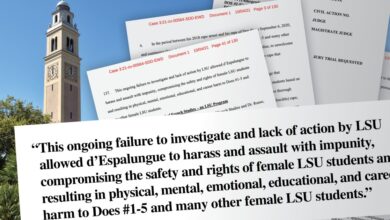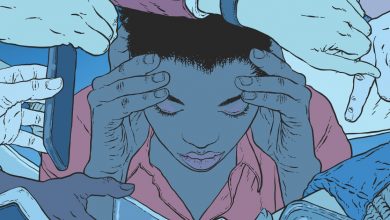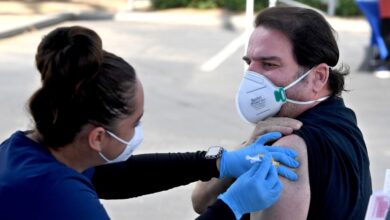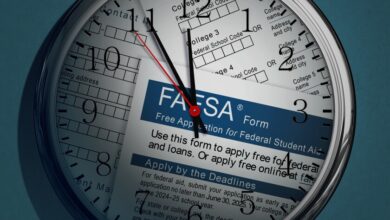Researchers Did a Deep Dive Into Efforts to Restrict Critical Race Theory. Here’s What They Found.

[ad_1]
Since Republican lawmakers began backing bills to limit diversity training or ban the teaching of “divisive” topics, most national news coverage has focused on such efforts in red states. But a new analysis reveals that restrictions like these have popped up in nearly every state, with local governments and school boards taking matters into their own hands when the state doesn’t act against critical race theory.
The new CRT Forward Tracking Project follows and analyzes anti-critical-race-theory legislation, regulations, and administrative policies on a national scale. Begun by the University of California at Los Angeles’s law school on Tuesday, the project has analyzed almost 24,000 articles and found nearly 500 instances of attempted limits on the teaching of critical race theory. The project’s director, Taifha N. Alexander, said the most surprising result of her work is that the group has found cases in nearly every state.
Alexander said that, while it may seem like these measures are being introduced only in conservative states, that perception reflects state-level activity, ignoring local action. In California, for example, the project has not identified any state-level efforts but has found many anti-CRT measures at the school-board level.
“If you are living in the United States, everywhere from Alaska to New Hampshire and everywhere in between, there have been anti-CRT measures implemented at some level. The only exception to that is Delaware,” Alexander said.
While anti-CRT measures can be found across the country, the study did find that proposals were most heavily concentrated in Virginia, Florida, Missouri, and the U.S. Congress.
UCLA Law’s critical-race-studies program, which houses the project, is among the first dedicated critical-race-theory law-school programs in the United States, studying the intersection of the law and race and offering a specialization for students. Alexander said that, while the tracker classifies measures as anti-CRT, their actual substance often mischaracterizes and oversimplifies the complicated and nuanced field that is critical race studies.
“Some of these things specifically ban critical race theory,” Alexander said. “But for the most part, what we’re seeing is that there’s this co-optation of the term ‘critical race theory’ and this mischaracterization of the theory that’s being mobilized to ensure that the nation can’t realize its full potential as a multiracial democracy.”
The extensive data, which can be viewed in an interactive map or via a granular table, can be filtered several ways, including the date it was introduced (the earliest is a Pennsylvania local school-district policy started in September 2020) and how the planned measure was designed to be enforced. Alexander said that is the project’s unique contribution — it not only tracks the different instances, it contextualizes and analyzes them, too.
That analysis isn’t finished, but the researchers have already drawn a few conclusions about the data. For example, they found that about half of the activities tracked in the database use concepts pulled from former President Donald Trump’s now-rescinded Executive Order 13950, which introduced the idea of “divisive concepts.” These concepts, which Trump banned from federal trainings, included, among other things, the idea that the United States is inherently racist or that any individual should feel “discomfort, guilt, anguish, or any other form of psychological distress” based on their race.
The researchers also found that 94 percent of the measures targeted schools and colleges. Narrowing it down further, the database has logged about 100 instances where states, counties, or the federal government tried to limit or eliminate CRT from college classrooms. Many academic organizations have already come out in strong opposition to the bills, saying they infringe upon faculty and student rights.
Alexander said the data-collection process was extensive, involving about 32,000 targeted searches through news and legislative databases. Then researchers sifted through each article to determine whether it was indeed a new instance of an anti-CRT measure, at which point they worked to track down the original policy using school-board websites or meeting minutes. Then a barrage of classification questions followed. What conduct are they trying to prohibit from teachers? Does it specifically mention “The 1619 Project”? Does it prohibit “divisive concepts”?
“A lot of different organizations are also engaged in this important work. But our value-added is that not only are we providing a database for each of the anti-CRT measures at every level, but also giving you better information as to what specifically the measure is prohibiting or demanding,” Alexander said.
CRT Forward has three main commitments, of which the tracking project is only the first. The project also aims to demonstrate “the contributions of critical race theory across time: past, present and forward to the future” and to support future scholarly works that advance critical race theory and further explain its current scrutiny.
“We want the database to serve as a source of information for further intellectual inquiry,” Alexander said. “The more informed we are, the more we’ll be able to respond and to better understand exactly what’s going on.”
[ad_2]
Source link






